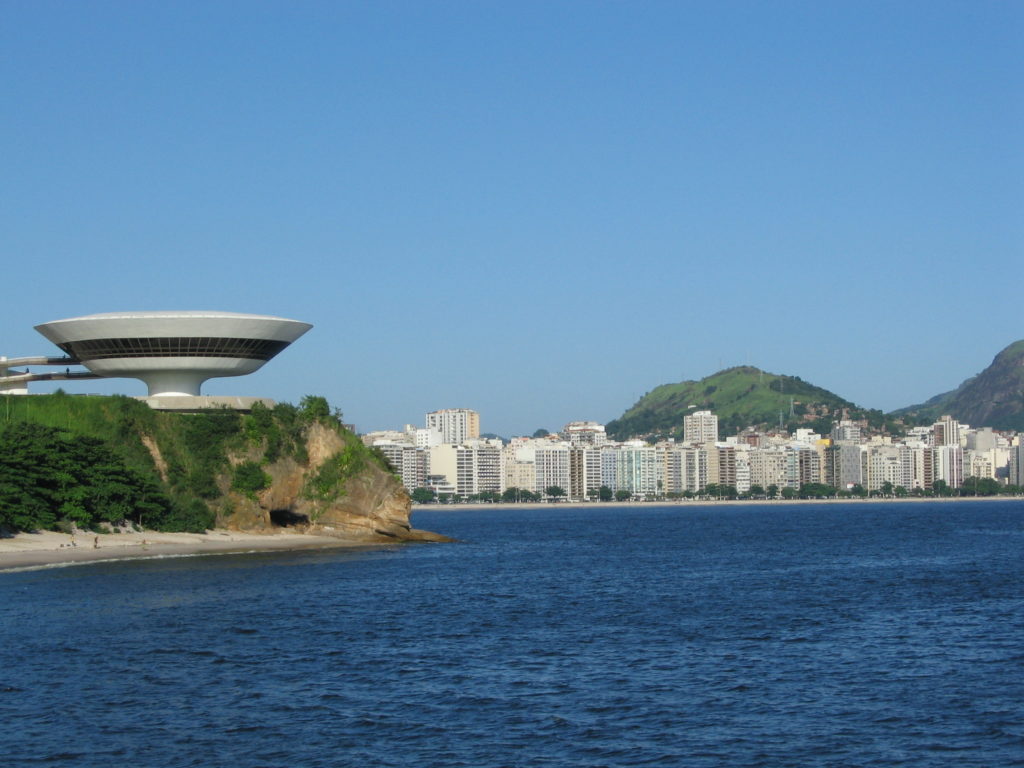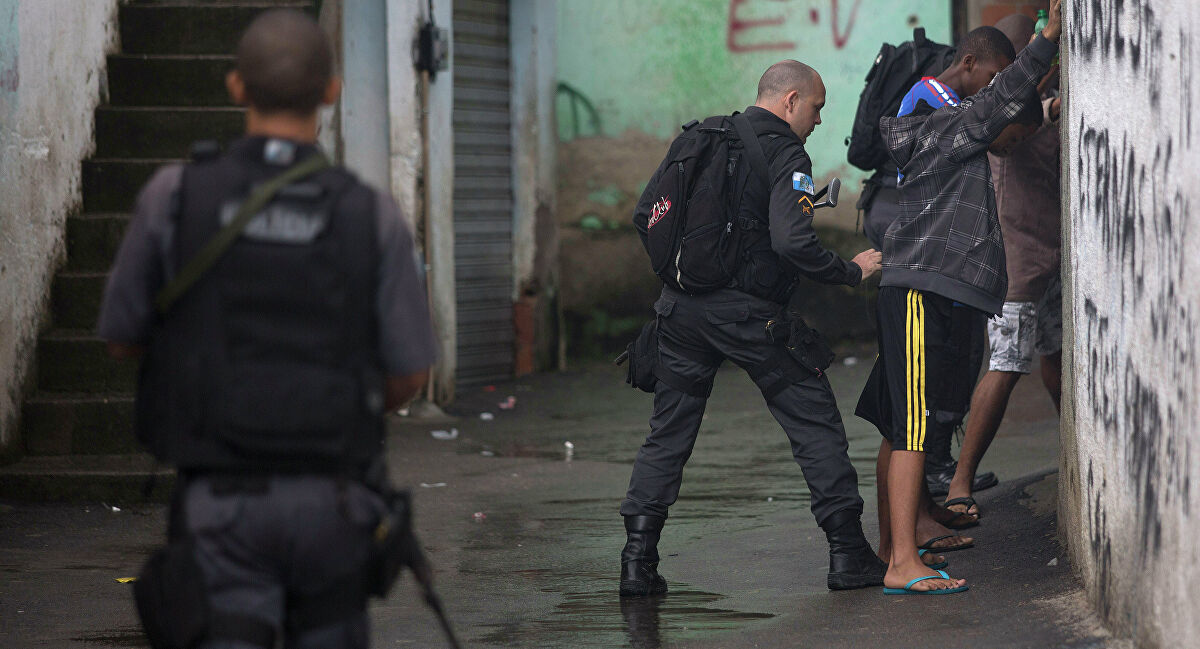RIO DE JANEIRO, BRAZIL – Nutritionist Iris Motta, 46, and journalist Alessandro Conceição, 37, live in Niterói, a city 15 kilometers from the capital Rio de Janeiro that boasts some of the best social and economic indicators in Brazil.
However, both live very different realities. It’s late afternoon and, like a few dozen people, Iris exercises on the São Francisco beach boardwalk, the city’s upper-middle-class neighborhood. The streets are impeccably clean and a police car provides security in the area.
“Living here is great, I feel very safe,” says Iris, who is white and lives in Canal, a middle-class neighborhood. Some of these quality services even reach the favela complex of Viradouro. But Alessandro’s daily life, who is black, is trap-filled. “In my whole life, dwelling in certain areas always leads to great suspicion. I know that the vigilant gaze of police officers turns towards me,” he says.

The young man has been coexisting since August 19th with a new occupation by the State Police in his neighborhood, despite the fact that the Supreme Court banned police operations in Rio’s favelas during the coronavirus pandemic.
Rio de Janeiro’s wealthy neighbor is proud to rank seventh-highest in the country’s Human Development Index (HDI). According to IBGE (Brazilian Institute of Geography and Statistics), the per capita GDP in 2017 stood at R$55,000 (US$11,000) in Niteroi, while the whole country reported just over R$31,000 that same year. But the “smile city”, as it became known because of its quality of life, also portrays a deeply racist Brazil.
Such is the conclusion emerging from the Inequality Map of the Rio de Janeiro metropolitan region released this month by the NGO Casa Fluminense. In a former study conducted by Nexo newspaper based on IBGE and Brown University data, Niterói emerges as the city in Brazil that most segregates by skin color.
Police violence against blacks
The indicators that best illustrate this reality are urban and police violence. In Niterói, 60 percent of all violent deaths in 2019 were committed by police officers in the state of Rio de Janeiro. Among the total number of police victims, 88 percent were black, according to data from the Public Security Institute analyzed by Casa Fluminense.
The percentage is higher than throughout the whole of Brazil (75.4 percent), in the metropolitan region of Rio (79 percent), and in the capital city of Rio de Janeiro (81 percent). In absolute numbers: the police killed 125 people last year in Niterói; 110 were black.
These figures are even more alarming given the fact that in the city blacks are a minority: they represent 35.77 percent of the entire population, the lowest proportion in the metropolitan region, according to the 2010 IBGE census. That year, the average in the region stood at 52.78 percent.
“I still live on the hill and I coexist with neighbors, acquaintances and even relatives being murdered,” says Alessandro. In 2007, his brother was murdered by state agents in Campo Grande, a suburb of western Rio de Janeiro. “I myself woke up with the police inside my house with a gun to my head. That was recurrent,” he says.
The State Police Special Operations Command has been conducting an operation in the Viradouro, Igrejinha, and Grota favelas of Niteroi since August 19th. According to the local press, leaders of the local drug trade wanted to impose a R$20,000 fee for the city hall to undertake infrastructure works. Alessandro explains that the improvements “are very interesting, but lack dialogue with the community.”
The operation would have begun at the request of Mayor Rodrigo Neves, who met with Governor Wilson Witzel. “There are now some deaths. They are also invading the homes of residents, one of them a girl who works at the medical center. They broke into everything,” says the young man.
The State Police was asked about these accusations, in addition to the legality of the operation after the Supreme Court’s ruling. The force limited itself to listing the seizure of weapons “in addition to two arrests and four individuals injured in clashes assisted in healthcare facilities”.
When the operation began, Col. Sylvio Guerra, commander of the 12th BPM, said the occupation of the area had been planned for a month and will involve three stages, the last of which will include the installation of armored booths at strategic points.
Neves explains that the operation “is part of the strategy planned by the Niterói Pact Against Violence,” which “completed two years this month when crime rates in the city are at their lowest in the past 20 years.” The city government also highlights that data from the Public Security Institute of Rio de Janeiro (ISP) point to a 90.63 percent drop in the violent lethality indicator in June this year, compared to the same period in 2019.
Still according to the local administration, the infrastructure works will cost R$40 million and should begin in August. They will include eight hill contention points, “in addition to reforestation, sanitation, drainage, access rehabilitation, cultural facilities, a social inclusion and sports park, and a Digital Platform.”
In addition to police operations on the city’s outskirts, Alessandro says that he and his neighbors live in a state of constant surveillance. “There’s this thing that you should remain in your place. Going downtown means that you’ll be chased for being black,” he argues, on the dynamics of the city.
He also says that many people eventually avoid going downtown or to luxury neighborhoods like Icaraí, which records the highest HDI in the entire state. The prevailing attitude is “If you haven’t come here to work, then please don’t come here.”
Recently, a 24-year-old black man, Danillo Félix Vicente de Oliveira, was arrested in downtown Niterói, on charges of armed robbery. In a second visit to the police station, the victim eventually recognized Danilo in a photograph presented to her.
Danilo’s family and defense counsel protest: they say the photo shown was old, from 2017 when he didn’t even have the dreadlocks in his hair that he has now, and they didn’t even look for the surveillance cameras at the scene of the robbery. “They arrested him only on the victim’s word. It’s a case of racism,” protests his wife, Ana Beatriz Sobral. Ana Beatriz has organized an online petition for his release from jail.

Investments in culture and sanitation
Iris is unaware of what it is like to be approached by the police. “No, nothing at all”, she answers, when asked about the subject. “I feel very safe indeed. With this security program in place, it’s even better.” In her opinion, living in Niterói is synonymous with relying on many service options around her and mainly of quality of life.
The study by Casa Fluminense confirms this perception and shows some indicators of which Niteroians are most proud: it is the only city where 100 percent of its 500,000 inhabitants have water supply and 97.7 percent have sewage collected and treated, according to data from 2018 by the State Environmental Institute (INEA) used by the study – nine cities in the Rio de Janeiro metropolitan region have zero percent of sewage collected and treated by sanitation companies.
In addition, the Neves administration invests the most in culture in the region: in 2018, it allocated 1.55 percent of its budget to the sector. “We have the Museum of Modern Art, the Popular Theater… Here we see that things are in their places. Urban cleaning, lighting, everything,” says Iris. People live up to the age of 70 on average, which also ranks it as the city with the highest longevity rate in the metropolitan region, whose average is 66 – in Brazil it is 65.
However, in the same city, the average age gap for death between whites and blacks is 13 years, the greatest discrepancy in the metropolitan region found by Casa Fluminense’s study. This means that the black population lives an average of 57 years. “My grandmother died at 72, which is a lot. But she was a housemaid and her whole life was dedicated to taking care of white people,” says Alessandro. “She took care of a white person who died at age 99. Maybe my grandmother could have lived a lot longer if she had not had to take care of someone who died at 99.”
Vitor Mihessen, one of the study’s coordinators, argues that although Niterói shows positive results, “when we racialize the data we see that this quality of life does not contemplate the population as a whole.” In Brazil, this average gap in longevity between whites and blacks is eight years; in the Rio metropolitan region, it is ten years.
“The social structures established for this population define who lives and who dies the most. It is the consequence of this broad scenario of lack of access to healthcare, assistance, education… All this is accumulated in the average age at death,” adds the coordinator.
Environmental tragedies
Despite its highly praised urban infrastructure, Niterói also emerges as the leader of environmental tragedies in the Rio metropolitan region. The city recorded 188 deaths between 2010 and 2019 due to landslides, storms, and floods, ahead of Petrópolis (108) and the capital (69). Alessandro and his family were among the victims of Niteroi’s most famous landslides, which occurred in 2010 in Morro do Bumba and other favelas in the city after a severe storm.
“Our house in the Complexo do Viradouro collapsed and we had to live with relatives. I moved in with my grandmother and my mother moved in with her sister. Then our family split up from 2010,” says Alessandro, for whom the tragedy is not only the result of an environmental catastrophe. He speaks of “environmental racism,” since these favela territories are inhabited mainly by the black population that has been historically segregated from urban space.
“The memories are of desolation, of being torn apart, homeless and without a floor. These are memories of material goods sliding down the hill. And we also no longer have this family core,” explains Alessandro. “We always need to be rebuilding life, always starting from scratch. This is exhausting, it makes you tense, you can never rest.”
Nevertheless, Alessandro recognizes that some public services are well structured even for the black population who live in the favelas. “Some get more investment than others, but I see education quite universalized. In the health area, every community has family doctors and it works very well.” He also recognizes the city government’s work in the cultural sector, as well as its efforts to prevent coronavirus in the peripheries.
“No one here is saying that there are no wonderful indicators regarding sewage or quality of life, but we still see that the black population is dying more. Whether by Covid-19 or in police operations. And these deaths follow the same logic of extermination of the population.”
Asked about the issue, the Niterói City Hall emphasizes having created the Special Coordination of Policies for the Promotion of Racial Equality (CEPPIR). “The municipal body provides a service to people who are victims of racism and racial insult, with legal guidance for a referral to the appropriate bodies for investigation, in addition to carrying out campaigns to raise awareness about rights,” explains the Neves management.
The first Municipal Council for Racial Equality in the city was also established, with representatives from the government and civil society to promote and control the execution of municipal public policies in the racial equality field. The city government stresses the sanction on July 30th of the law that regulates quotas for candidates in the municipality’s public bid tenders, with 20 percent of job openings reservedfor black and mixed-race people.
Source: El País

